Books Are Invitations: 5 Books That Shaped K-Fai Steele
If you are a dreamer, a wisher, a liar, come in, come in!
K-Fai Steele didn’t grow up wanting to make books; she wanted to be a fish. While the laws of nature deemed Steele’s childhood dream an impossibility, Steele’s parents did not. They encouraged her strange ambitions and provided her with a childhood that sounds like the summary of a wonderfully weird children’s book. Steele grew up in Charlton, MA, in an old house built in the 1700s with a printing press her dad bought from a magician and a vibraphone she played in an old red barn. Her parents owned an antique shop, where she would play for hours, making up stories with old toys or anything she could get her hands on. Steele’s dad, a bohemian poet, dragged her to countless poetry readings, introducing her to fascinating artists like Rita Dove, Gwendolyn Brooks, and Mark Strand (both Lawrence Ferlinghetti and Allen Ginsberg held her as a baby!). It seems her fate wasn’t to be a fish but to be a storyteller.
Steele has always loved stories and was an avid reader as a child, but she didn’t grow up with a lot of books in her house; hers came from the public library—a space that still looms large in her life and work. This past summer, I met Steele for the first time at the San Francisco Public Library, where she and a librarian led a group of picture book fans on a tour of the library’s incredible free resources (oversized reference stacks, bound periodicals, photo archives, etc.). It was a revelatory experience, even for me—a person who spends a lot of time in libraries. I had no idea how much the library offers and how easy everything is to access. The library isn’t just a treasure trove of information; it’s a place everyone has free and equal access to—no one is turned away. They’re a place of wonder, freedom, exploration, knowledge, autonomy, comfort, and achievement. Steele’s books offer similar opportunities.
Steele, now a full-time children’s book author-illustrator, creates stories where kids can see themselves, especially kids who haven’t always felt seen in children’s books. In A Normal Pig (2019), Pip is a normal pig who does normal stuff, like cooking, painting, and hanging out with his pig friends. But then, a new pig comes to school and points out all the ways Pip is different. Suddenly, Pip doesn’t feel like a normal pig. But what is normal? And who gets to choose? After seeing Pip distressed, Pip’s parents take him to the bustling city, where he sees all kinds of different pigs with different tastes and appearances. Pip realizes that being different is not only OK, it’s totally normal.
In her picture book, All Eyes on Ozzy! (2021), Ozzy is a fun-loving enthusiast who thrives on attention. She likes many things, especially music—loud, attention-grabbing, dance-happy music. So she’s pretty bummed when her beloved music teacher, Ms. Bomba, doesn’t give her an epic drum solo and instead assigns her a “boring” keep-the-beat part in the class recital. In one of my favorite spreads in the book, we see Ozzy, sad and dejected, lying face down on her bed in her delightfully messy bedroom, surrounded by her favorite things. The text reads, “How were you supposed to feel good when all you got was bom-bom-bom-ding? Ozzy felt invisible.” It’s one of those tough moments we’ve all experienced when you desperately want the BAM-BAM-BAM-BANG, but all you get is the bom-bom-bom-ding.
But Ozzy doesn’t feel invisible for long. At the recital, when she sees everyone in the audience looking at her, she freezes, and perhaps for the first time, she isn’t sure how she feels about all the attention. Thankfully, with the support of her teacher and classmates, she remembers how to keep the beat, and it turns out it isn’t so boring after all.
Steele could have easily turned these stories into moralizing lessons, but instead, she helps children discover new and funny ways to deal with complex emotions. Her characters are authentic and multidimensional—they’re imperfect but likable—children relate to them and laugh with them. Best of all, Steele’s characters inspire children to continue the story beyond the pages of the book. This happened with my daughter, who was so enamored with Ozzy that she created a series of new adventure spin-offs, like Ozzy at the Zoo, Ozzy on Stage, and my personal favorite, Ozzy Flying High, which includes a cover drawing of Ozzy skydiving, gliding through the air with her long wing-like locks blowing behind her. For my daughter, Ozzy’s story wasn’t over when she finished the book; it continued to live inside her mind.
It’s these kinds of stories that make children life-long readers—stories with a vivid, immersive quality that invite children in, feed their imaginations, make them laugh and cry, and give them hope. They say, no matter who you are, '“a dreamer, a wisher, a liar, a hope-er, a pray-er, a magic bean buyer, a pretender,” (or maybe even a fish), “come sit by the fire. For we have some flax-golden tales to spin. Come in! Come in!”1
You know when you meet someone and it feels like you’ve known them forever? That’s how it felt when I met K-Fai. We immediately connected on Instagram after discovering we liked the same books, and then when she visited San Francisco this past summer, we met for lunch and continued our picture book gushfest—gabbing about Marshall, Lobel, Sendak, Scarry, and Gág. But K-Fai doesn’t know how hard it was for me not to gush over her. I tried to play it cool because K-Fai is the coolest. There aren’t many people I believe to be truly cool—the kind of cool that’s warm, generous, authentic, and unassuming—but she’s one of them, and it’s an honor to have her on Moonbow.
Enjoy!
5 Children’s Books That Shaped K-Fai Steele
The times when I feel most creative are the times when I’m also goofing off. All of my favorite fun details from my books are usually decided on a whim. At these moments, my drawings stop being objects; they become places to go to. My favorite books from childhood really reflect this notion of books as places where kids can play and feel like the story becomes their own.
Another thing I notice as I think about my favorite books from childhood is how much my parents, especially my dad, encouraged this sense of play and extended-a-book-beyond-storytime with me. I was really into the Fox series by James Marshall, and was also terrified of going underwater (these things aren’t related, and I am still afraid to go underwater). We used to take baths and my dad would sit in the tub and have me read to him, then we’d switch and I’d read to him. My dad told me once that Fox, in fact, was underwater near the drain. I had my dad relay messages back and forth to him, and when he emerged, I yelled, “WHAT DID HE SAY??!” In that moment, Fox was very real to me, and that kind of vivid experience is what’s in my mind as I make this list.
My family didn’t own a lot of picture books when I was growing up; we mostly got them from the public library. I think there were just fewer picture books being published in the 1980s generally compared to now (a fact that was confirmed recently by a librarian at the San Francisco Public Library). So this list is from when I was older and could read on my own but continued to read with my dad.
Something else that surfaces for me as I come up with this list is how much the drawing, specifically the outline of the characters (the linework), is part of the story. It’s not surprising that a strong and expressive line, especially for characters, is so important for me in my books. Another thing I see is how much characters and their emotions and humor drive these stories. I find that my more successful ideas begin with a character and then how they interact with, take in, and are at odds with the world around them.
Fox and His Friends (1972)
by James Marshall
I re-read this series a few years ago after I spent three weeks as a fellow at the archives of the Kerlan Collection at the University of Minnesota. A lot of James Marshall’s work is housed there, including his manuscripts, sketches, and original artwork for this series (along with 44 of his sketchbooks, which I wrote about here). I think of all of his books; the Fox series shows his comedic brilliance when it comes to characters and dialogue. In his drafts, you can see him laboring over phrasing and word choices to make sure he nails jokes. As he says in his lectures that he gave to Francelia Butler’s classes at UConn (which I wrote about here and studied at the Northeast Children’s Literature Collection during a James Marshall fellowship), “Good picture books can’t have one ounce of fat. You have to grab your audience right away, and bounce text off the picture and picture off the text. When you look at a bad book they don’t do that.”
Owl at Home (1975)
by Arnold Lobel
I think most of the books my parents bought for me were from the bookshop Stone Soup in Camden, ME. We spent some weeks during the summer at my family’s house in nearby Round Pond, and there were just so many boring hours that were mostly filled with reading, climbing on rocks near the lighthouse, and crawling into sandy sheets at night. We kept a copy of Owl at Home up there (I think it’s still there), and I remember the chapter where he makes “tear-water tea” by thinking of the saddest things possible to cry about and fill his teapot. That story really resonated with me (probably because I was deeply bored up there), but I also think they were some of my first feelings about death. When I think about those stories (spoons that fell behind the oven and stayed there, never to be used again), they still make me sad. And Arnold Lobel does it so beautifully; it’s such a masterpiece. They have his manuscripts for Frog and Toad at the Kerlan, and when I saw them for the first time, I wept big tear-water-tea tears.
Where the Sidewalk Ends (1974)
by Shel Silverstein
I loved this book so much that it inspired me to make my own drawings inside of the actual book. This is my dream as a picture book maker; that my drawings spark something that makes kids want to draw, too (this is why I try to make all of my books 8.5” x 11” so that kids can put a piece of paper on top of the pages and trace it). We had the audiocassettes of Shel Silverstein reading Where the Sidewalk Ends and A Light in the Attic (that we probably listened to on drives up to Maine), and it was my first experience of an illustrator and writer as an actual person reading their work. I adore everything about him and strive to be an artist in the way he embraced creativity and performance.
George’s Marvelous Medicine (1981)
written by Roald Dahl and illustrated by Quentin Blake
It’s hard to choose a single book from this duo, but I feel particularly excited about this book. It captures all of the things I love about their partnership; magic, naughtiness, detestable authoritarian adults. Quentin Blake’s line inspires me still; he uses the technique that Chinese aesthetic writers called qiyun shengdong (“spirit resonance”), a brushstroke/penstroke that makes a character come alive. It’s not about accuracy of image; it’s about conveying the spirit and essence of a thing. I look at his work when things get tight with my drawing, and I need to look at what joyful drawing looks like.
What Do People Do All Day? (1968)
by Richard Scarry
I had a Huckle Cat doll I played with all the time as a kid, and for a while, he got mixed up in the world of my Barbies. There isn’t a specific book that I remember of his as a kid, but I definitely remember The Busytown world. It’s one I get lost in now with my own 2-year-old. We live literally in Busytown; in 2020, we moved to Lausanne, Switzerland, where Richard Scarry also lived from 1968-1972. I see the influence of Switzerland’s architecture and culture as I re-read his books now, and had the chance to visit his beautiful little wooden carved chalet in Gstaad and meet his son (the real-life Huckle Cat) this summer. He was so deeply influential to so many other picture book makers, including myself, and it’s sort of boggling that he never won any major awards.
I recently asked my parents what books they remember us reading as kids. My dad remembered Richard Scarry, but he remembers the stories all wrong. But isn’t this the thing about special books from your childhood? You read them, and they become your own; you make the characters and the stories come alive for you, or for the kids that you’re reading them to. And ultimately, I think that’s my goal as a picture book maker, to draw and write stories that kids can spin into their own worlds.
Thanks, K-Fai!
Follow her at areyouokfai on Instagram and www.k-faisteele.com
More Moonbow Features
Moonbow comes out twice a month—and you can help keep it coming by becoming a paid subscriber, forwarding this newsletter to a friend, “restacking” articles, leaving a comment, or simply clicking the “like” button.
Thank you!
Taylor
“Invitation” by Shel Silverstein, from Where the Sidewalk Ends, 1974.


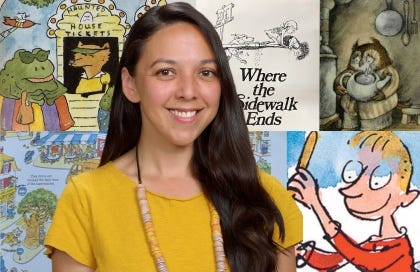









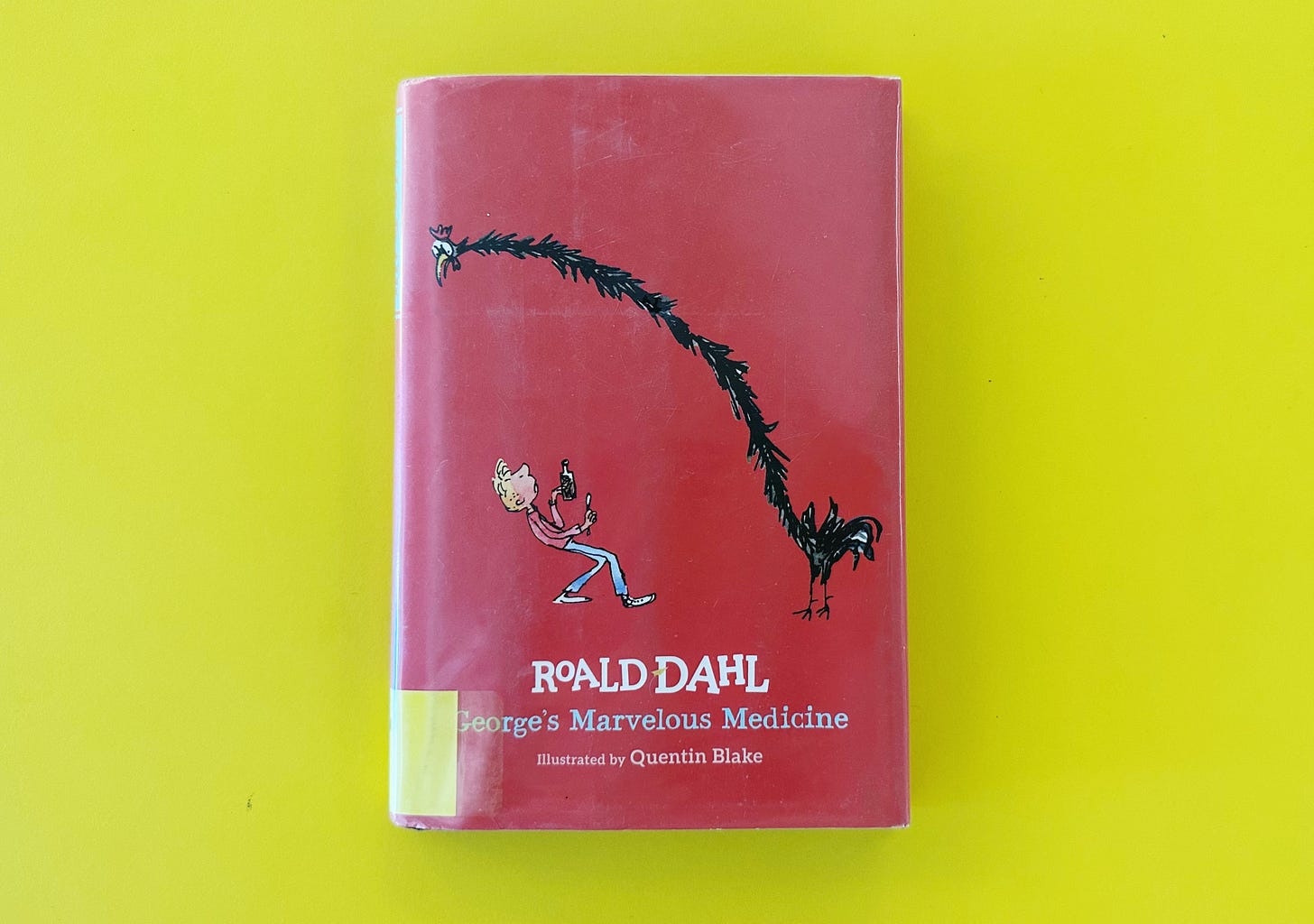

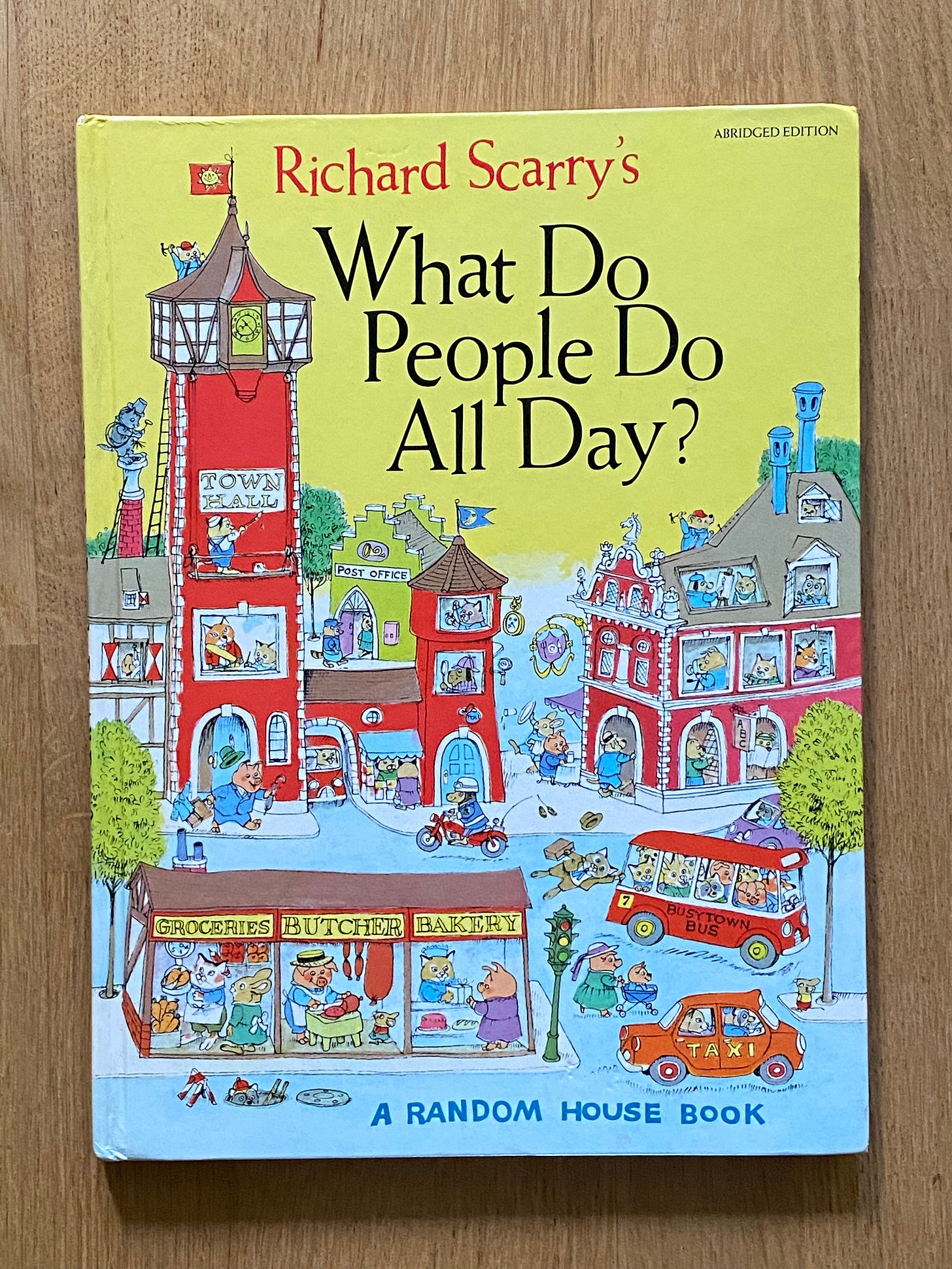


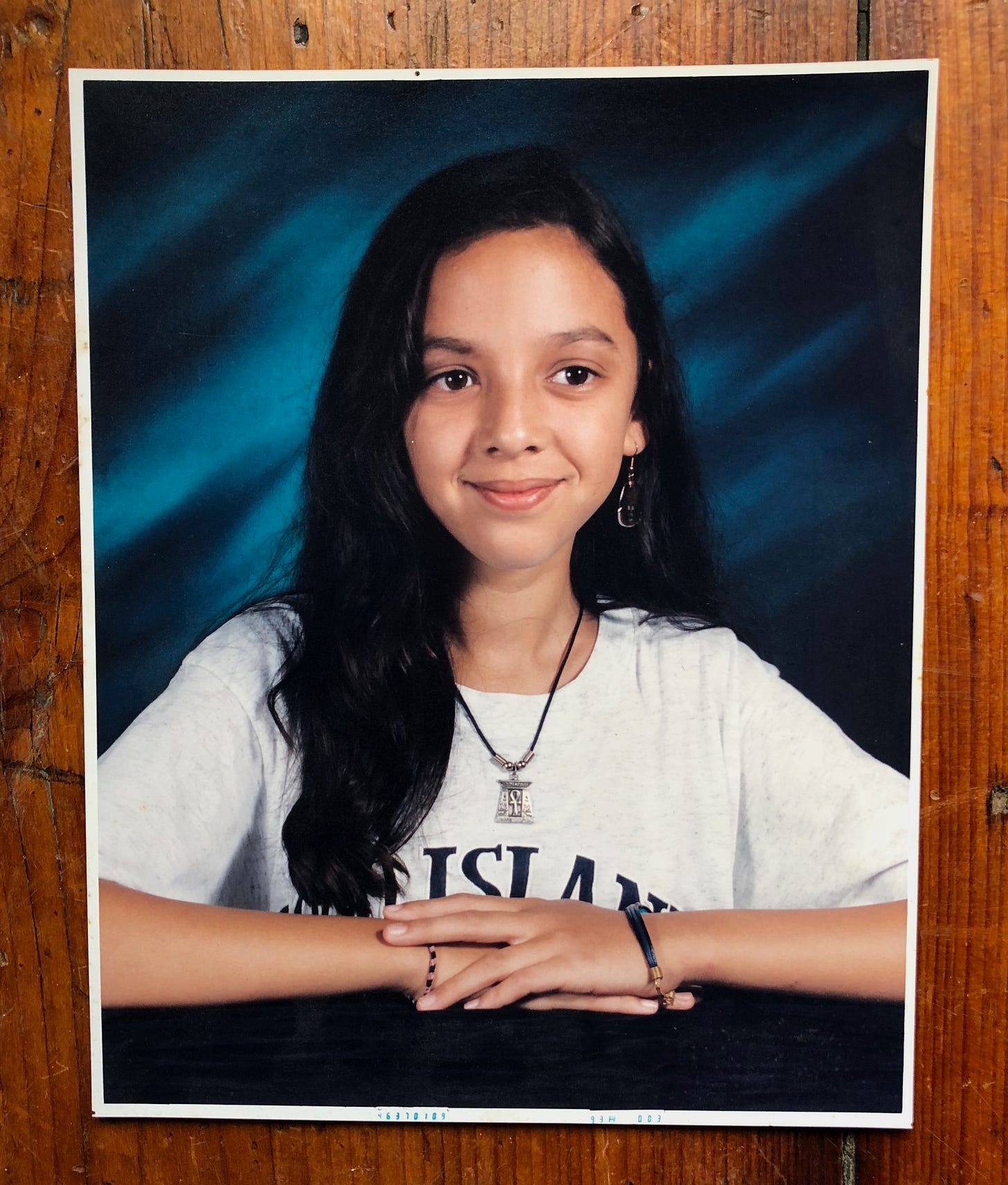


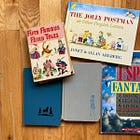
All the heart eyes to you for this amazing interview with K-Fai! She's a huge favorite of ours, inspirational peer to me, and was a big help to me when I applied to the James Marshall Fellowship! Fellowship Friends 4Ever!
I learned about K-Fai Steele via Moonbow and she features heavily in my Christmas gifts. If you have a kid, you’re getting one of her books from me. I loved reading this interview and an illustrators perspective on these classics.